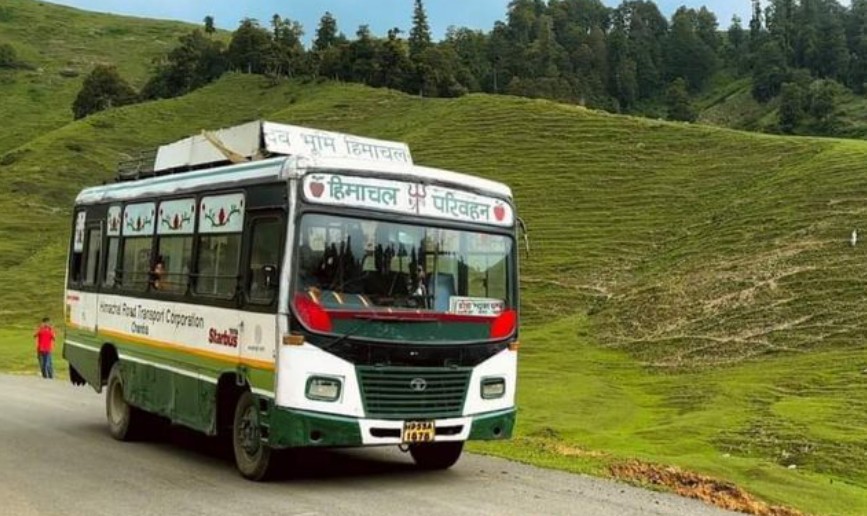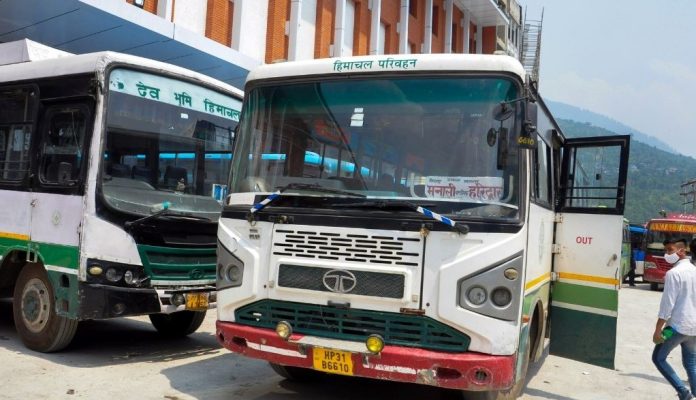The Himachal Road Transport Corporation (HRTC) has recently decided to suspend ten major routes that connect Himachal Pradesh with Punjab. This move has created significant disruptions for commuters, businesses, and the overall transportation network between the two states. The suspension comes amid mounting financial constraints, operational challenges, and a decline in ridership, making it increasingly difficult for the corporation to maintain these services.
HRTC has been a crucial provider of public transportation services for decades, ensuring connectivity across Himachal Pradesh and its neighboring states. The corporation has played an integral role in facilitating travel for thousands of passengers, including daily commuters, students, traders, and tourists. However, recent developments have necessitated a reevaluation of its operational efficiency. Officials from HRTC have pointed to several factors that influenced this decision, including decreasing passenger numbers, rising fuel prices, and maintenance costs. The competition from private transportation services and improved alternative options has further contributed to the decline in ridership, making it financially unviable to continue running certain routes.
Among the ten routes affected by this suspension, several key links between Himachal Pradesh and Punjab have been impacted. Travelers who frequently commute between major cities, such as Shimla and Ludhiana or Dharamshala and Amritsar, now face significant inconvenience. These routes have historically served as vital transportation corridors, especially for those traveling for work, education, business, and religious tourism. The impact is expected to be felt the most by pilgrims who regularly visit the Golden Temple in Amritsar, as well as students and professionals who depend on public transport for daily travel. Other important routes that have been suspended include Manali to Jalandhar, Kullu to Patiala, Chamba to Hoshiarpur, Solan to Bathinda, Bilaspur to Pathankot, Hamirpur to Mohali, Una to Ferozepur, and Mandi to Ropar. Each of these routes has played a crucial role in connecting residents of Himachal Pradesh to significant economic and commercial hubs in Punjab, facilitating not only individual travel but also trade and commerce between the two states.
The financial strain on HRTC has been a major driver of this decision. With increasing fuel prices and operational costs, maintaining these routes has become an unsustainable burden for the corporation. Many of the buses running on these routes require frequent maintenance, adding to the overall costs. Furthermore, the rising competition from private transport operators, shared cab services, and online ride-hailing platforms has drawn passengers away from state-run buses, reducing ticket revenue and worsening the financial situation. The state government has been aware of these concerns but has yet to provide a sustainable solution to support HRTC in maintaining these routes. Officials within the corporation have expressed concerns that without adequate government intervention or financial aid, more routes may be at risk of suspension in the future.

The suspension of these routes has not only disrupted travel but also created economic implications for local businesses and communities that depend on public transportation. Many small traders, shop owners, and suppliers rely on HRTC buses to transport goods and conduct business between Himachal Pradesh and Punjab. With these routes no longer operational, supply chains are likely to be disrupted, leading to delays and increased costs for businesses. Additionally, students who commute daily to educational institutions in Punjab will face challenges in finding alternative means of transport, often at a higher expense.
The public reaction to this decision has been mixed, with many affected commuters expressing frustration and disappointment. Protests and appeals have emerged in several towns, with citizens urging the government to reconsider the suspension and explore alternative solutions. Various passenger welfare associations have voiced their concerns, requesting financial support for HRTC to ensure that essential routes continue to operate. Local representatives and political leaders have also weighed in on the matter, calling for an urgent review of the decision to minimize the inconvenience caused to the public. Some government officials have suggested introducing smaller, fuel-efficient buses that require lower maintenance costs or implementing a more flexible schedule to maintain connectivity while reducing operational expenses.
Despite the challenges, HRTC is actively exploring potential solutions to address the situation and restore some of the affected services. Discussions are underway to evaluate alternative transport models, including the possibility of public-private partnerships that could help share the financial burden and maintain essential travel routes. Route optimization strategies are also being considered, where the frequency of services could be adjusted based on demand rather than complete suspension. Another option under review is seeking government subsidies or financial aid to offset operational costs, allowing the corporation to continue running critical routes without incurring significant losses. Additionally, investing in modern, fuel-efficient buses could help reduce maintenance costs and improve the financial viability of these routes over time.
The impact of this suspension extends beyond commuters and businesses; it also affects the overall tourism industry in both states. Himachal Pradesh is a popular tourist destination, attracting visitors from Punjab and other regions throughout the year. The suspension of key routes may discourage tourists from using public transport, leading to an increased reliance on private vehicles or alternative travel options. This shift could potentially affect local tourism-related businesses, including hotels, restaurants, and tour operators, who depend on steady tourist inflows facilitated by public transportation. Religious tourism is also expected to take a hit, with many pilgrims facing difficulties in reaching destinations such as Amritsar’s Golden Temple or Himachal’s various spiritual sites.
Moving forward, a well-balanced approach is necessary to ensure that public transportation services remain accessible and efficient without imposing excessive financial strain on HRTC. The state government, transport authorities, and relevant stakeholders must work together to devise a sustainable solution that addresses the financial challenges while maintaining crucial connectivity between Himachal Pradesh and Punjab. Encouraging investment in infrastructure, modernizing the fleet, and leveraging technology to improve operational efficiency are potential long-term solutions that could help HRTC overcome its current challenges.
The suspension of these ten routes is a stark reminder of the broader difficulties faced by public transportation systems in India. The financial viability of state-run transport services is increasingly being challenged by rising costs and evolving commuter preferences. The shift towards private transportation options, while offering convenience to some, also raises concerns about affordability and accessibility for lower-income travelers who rely on budget-friendly bus services. Ensuring that public transportation remains a viable and sustainable option requires proactive measures, including financial support, route optimization, and strategic investments in infrastructure and vehicle maintenance.
In conclusion, the decision by the Himachal Road Transport Corporation to suspend ten routes to Punjab marks a significant shift in the state’s transportation landscape. While the financial and operational challenges necessitating this move are undeniable, the resulting inconvenience for commuters and businesses cannot be ignored. Finding a balanced and sustainable solution that addresses these issues while maintaining essential connectivity should be a priority for both HRTC and the government. Whether through financial support, strategic route planning, or collaboration with private operators, restoring and enhancing public transportation services will be crucial in minimizing disruption and ensuring that residents of both Himachal Pradesh and Punjab continue to have reliable and affordable travel options. As discussions continue, stakeholders remain hopeful that an effective resolution will emerge, allowing for the reinstatement of at least some of these vital routes in the near future.


